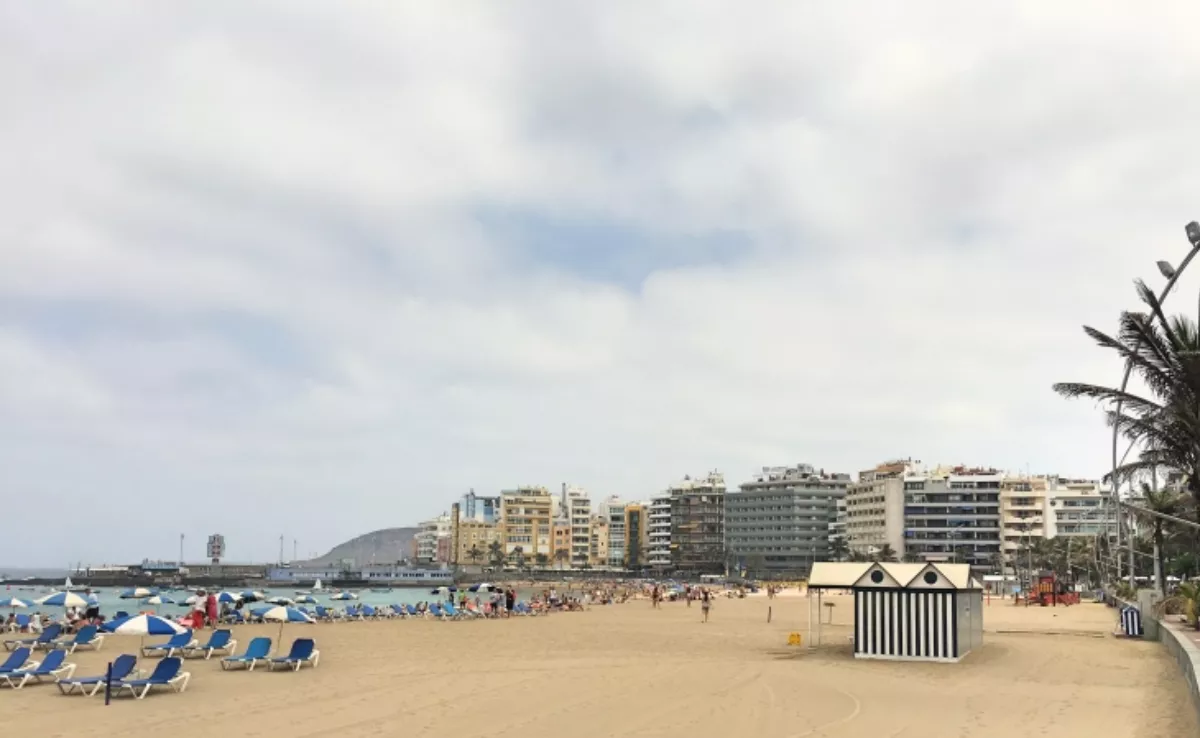
While in much of the country, summer is experienced with fans, air conditioning units, and extreme temperatures, in certain parts of northern Canary Islands, people are strolling about with light jackets in the middle of July.
There, the sky remains overcast for weeks, the sun peeks out sporadically, and the thermometers rarely rise above 25 degrees.
Interestingly, this is not due to a storm or a seasonal anomaly. It is a completely habitual, predictable, and, above all, desired phenomenon by those familiar with it. We are talking about the “burro’s belly,” that great umbrella of clouds that covers the northern cities of the islands throughout the summer.
In the city of Las Palmas de Gran Canaria, the phenomenon is so common that it has become part of the local imagination.
Every summer, the low clouds brought by the trade winds accumulate on the northern coast, leaving grey skies, high humidity, and mild temperatures around 23 °C. Just a few kilometres to the south, on the same island, the thermometers register over 32 °C, with the sun shining relentlessly.
The explanation lies in the geography: the central mountains act as a natural barrier, trapping moisture on the north side and preventing it from advancing inland.
The origin of the burro’s belly is an established seasonal anticyclone in the North Atlantic during the summer months.
This anticyclone keeps the trade winds active and consistent, blowing in from the northeast with daily regularity. When these moist winds hit the Canary orography, especially on mountainous islands like Gran Canaria, Tenerife, or La Palma, they are forced to rise.
This ascent cools the air and leads to the formation of low stratocumulus clouds, which remain fixed over the northern coast.
What is remarkable about this phenomenon is the stark climatic contrast experienced in just half an hour of travel.
From Las Palmas, with its overcast sky and fresh breeze, it takes merely 30 kilometres south to find bright sunshine and temperatures exceeding 30 degrees.
“We can remove our jackets simply by travelling a few kilometres further south,” comments a local resident in the Cuatro news, used to experiencing these summers.
What might seem like a disadvantage — a summer without sun — has become a tourist attraction for those escaping extreme heat.
The City Council of Las Palmas de Gran Canaria openly promotes the concept of a “summer without heat,” especially for visitors who cannot bear the 40 degrees in mainland Spain.
“For us, it is a fortunate, protective advantage,” summarises Pedro Quevedo, the Tourism Councillor, also on Cuatro.
In an era of recurrent heatwaves, the coolness of northern Gran Canaria has transformed into a unique selling point and strategic appeal.
However, the burro’s belly has an expiry date.
With the arrival of September, the anticyclone begins to weaken, and the trade winds lose strength, allowing the sun to return to the northern skies.
Temperatures rise, and the city experiences a more uniform climate.
But during the peak summer months, this phenomenon remains a climatic peculiarity that few understand outside the archipelago, and those who experience it wouldn’t change it for anything.















